Essential Oils – A Lovestory
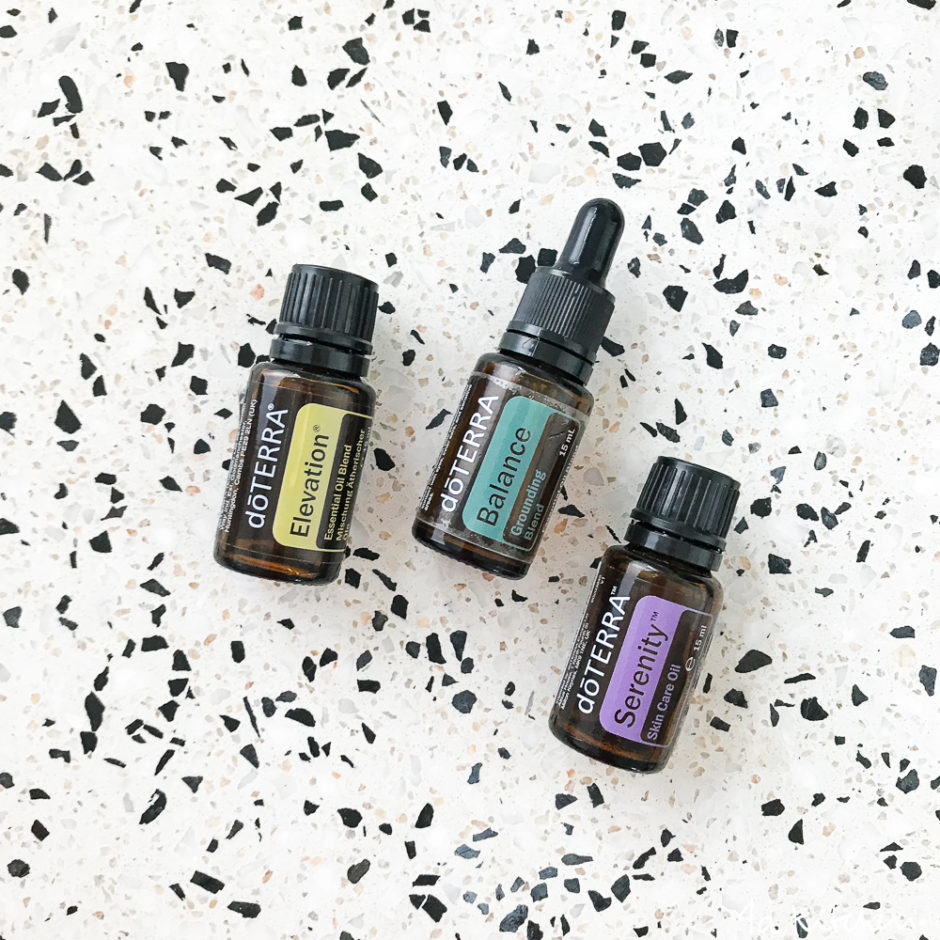
Advertising | Essential oils sneaked into my life, first quietly and then with great fanfare. For a good year, they accompany me from morning to evening, at the desk or in house cleaning, in the kitchen and for meditation, with physical ailments and to brighten the mood – and for birthdays and similar
I do not want to be without essential oils, and I hope I can inspire you to love these precious plant essences and their wonderful magic.
One thing in advance: since the topic is quite complex and essential oils are such concentrated, powerful substances, I advise you to inform yourself well in advance. Most essential oils are irritating to the skin and mucous membranes, so they must not be used undiluted or be brought to the eyes and mucous membranes. Special restrictions apply to pregnant women, infants, and toddlers, and internal use should only be made in consultation with a specialist. Last but not least, the profession of an aroma therapist requires extensive training.
But there are also many oils that can be used in everyday life with a little background knowledge. And not only that, in recent years, essential oils are also increasingly used complementary to conventional medicine in clinics, hospitals, and practices.
Wisely used essential oils are magical, fragrant little helpers.
It is particularly fascinating that essential oils act on both the physical (somatic) and the emotional (mental) level. Many oils even have an adaptogenic effect, that is, a balancing effect, depending on what the body needs.
The well-known lavender oil (Lavandula officinalis) e.g. can be invigorating as well as soothing, depending on where the momentary imbalance of the body lies. This is due to the 160 to 180 different active substances in lavender oil. It is, therefore, one of the ethereal wonder oils, has an extremely broad spectrum of action and may be applied as one of the few oils (in addition to rose oil and sandalwood oil) undiluted to the skin. Lavender oil has an antiseptic, anti-inflammatory, and antimicrobial effect, and is analgesic, antispasmodic and gentle expectorant. On a physical level, the mild lavender oil is often used for wound healing, it is the SOS agent of choice for minor burns and sunburn (pure on the skin), mosquito bites and itching. It is also used for respiratory ailments or indigestion. Last but not least, its scent keeps insects and clothes moths away.
The psychic effect of lavender oil is probably the most well-known – it has a calming, anxiolytic, sleep-inducing and restorative effect. Lavender oil should, therefore, be not missing in any medicine chest.
I love lavender oil in the evening in a footbath with soda and Epsom salt, especially in the summer, it is such a soothing treat.
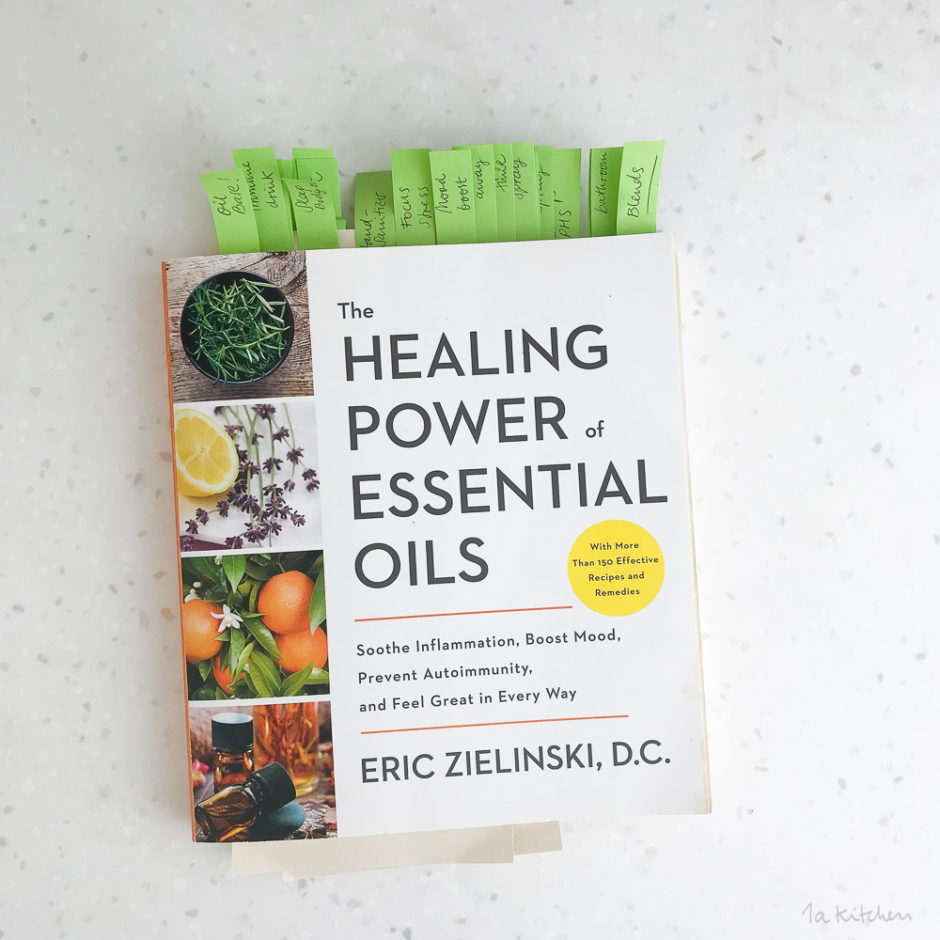
So how do you start?
Especially on the Internet, there is a range of information that is sometimes very contradictory. For a first insight into the topic, I have therefore put together the most important questions, tips, and further sources, which helped me at the beginning of the orientation. If you have further questions, do not hesitate to comment on this post.
What are essential oils?
Essential oils are volatile, highly potent essences derived from plants or parts of plants. Most plants naturally contain 1 to 3% of essential oils. The essential oils protect the plants e.g. from predators and diseases, attract insects for pollination and serve to communicate among the plants.
Essential oils are obtained predominantly by steam distillation, cold pressing (citrus oils) or solvents (e.g., vanilla). It sometimes requires large amounts of plant material, which makes them precious essences. For 1 kg of rose
Essential oils, especially when used improperly, can cause skin irritation or even cause allergies, so it is important to be sufficiently informed and to follow only trusted sources. Not everything that is recommended should be taken unchecked, as it is with the Internet. For all questions about safety in handling essential oils, I recommend the site of the Tisserand Research Institute.
How can essential oils be used?
Diffused
The best-known use of essential oils is certainly the aroma diffsuer, also called ultrasonic diffuser. Put a few drops of essential oil and some (best sterilized) water into the small water tank. Depending on your mood and need, you can use a single oil or put together a mix, which can be motivating, soothing or promoting concentration e.g.. Inspiration for diffuser blends you can find e.g. many on Pinterest.
I´m using on similar to this device currently in my office (also suitable for larger rooms and
However, essential oils are purely used antibacterial but dissolved in the water it can quickly cause bacterial contamination. In addition, the residues of the oils burn and can possibly secrete irritating molecules into the room air. It is therefore recommended to clean the diffuser after about two to three applications. For cleaning use either high-percentage alcohol or undiluted lemon essential oil.
For traveling, especially in hotel rooms, I love my little USB aroma diffuser (though it’s a little louder) with a few drops of lavender, orange
Topical
The application on the skin should always be diluted with a carrier oil and only after thorough research, consultation with an Aromatherapist or by suitable store bought products. In the beginning, it is recommended to do an allergy test on the skin (apply a diluted drop on the crook of the arm and wait 24 hours) as some people are allergic to some or even all of the essential oils. This is because once you have developed an allergy, it is often not reversible. So a rather carefully approach here is best. As a carrier oil almost every fatty vegetable oil is suitable, if needed even cold-pressed olive oil from the kitchen, see more under dilution below. For use in roll-ons fractionated coconut oil is a good one, or, for more nourishing properties, almond oil, jojoba oil or a mixture of both.
Inhalation
A great method, for a short time therapeutic purpose is inhalation, e.g. when having a cold or feeling anxiety.
Very simple and very effective is the dry inhalation. For
Of course, you can also use oils classically in an electric inhaler with water from the pharmacy. However, do remember that the oils are highly concentrated and vapor through the hot water very quickly into the respiratory tract, so you might want to check with a doctor before (and always clean the device well after use, as some oils can dissolve plastic).
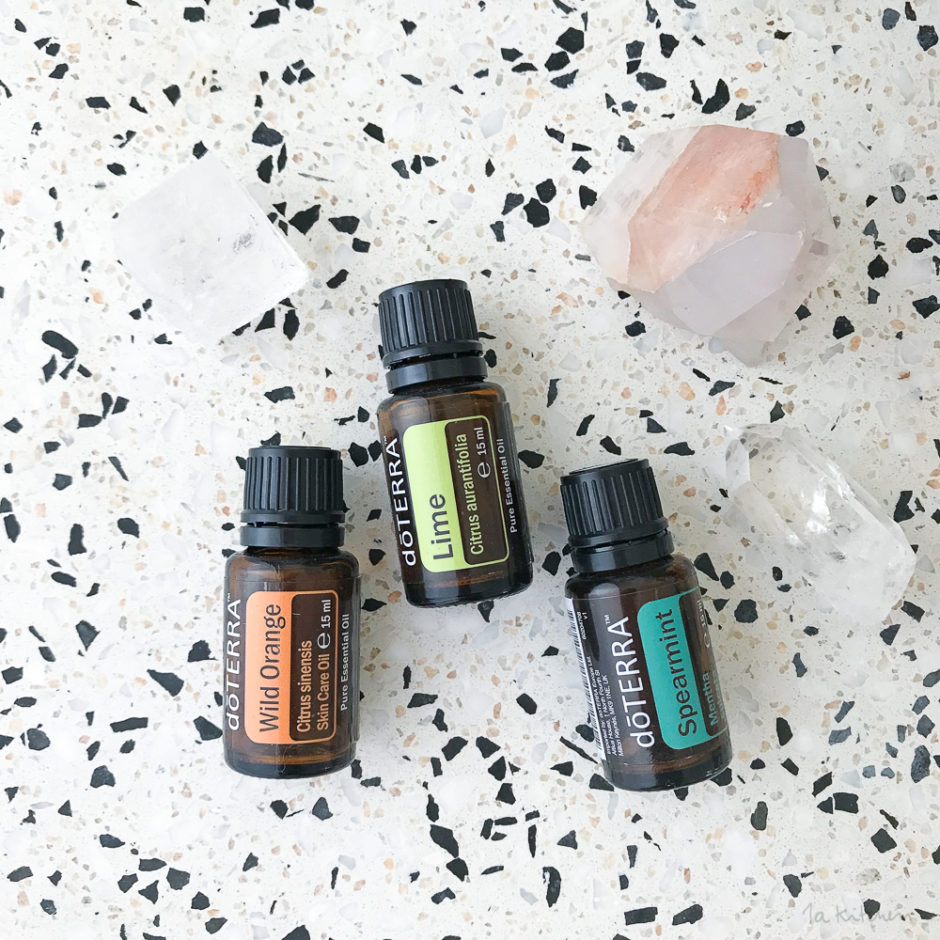
Dilution, durability and photosensitivity
Essential oils should always be diluted on the skin with a few exceptions, usually between 0.5 and 3%. This corresponds to the naturally occurring concentration of the oils in the plants. For aromatic body oils, a 1% dilutions
Some essential oils increase the photosensitivity of the skin, especially
Most essential oils are stable two to three years after crack, citrus oils only one year, resins and flower oils for longer. This is especially true for the application on the skin. Tea tree oil, however, should no longer be applied to the skin after six months (!), as it develops by the oxidation skin-irritating substances (the opened vial can be used great for cleaning or washing).
Also important is the storage, the vials should be stored as cool and dark as possible.
Can you cook with essential oils?
Essential oils have a lot to do with
Often a single drop (!) is sufficient for a whole dish for several people, and some essential oils should not be taken internally at all. Important for hot dishes: always add essential oil at the end.
Tasty are oils such as Cilantro or Lemongrass in curries and soups, cinnamon for baking or citrus oils in Energy Balls. Amazing is vanilla ice cream flavored with some black pepper oil!
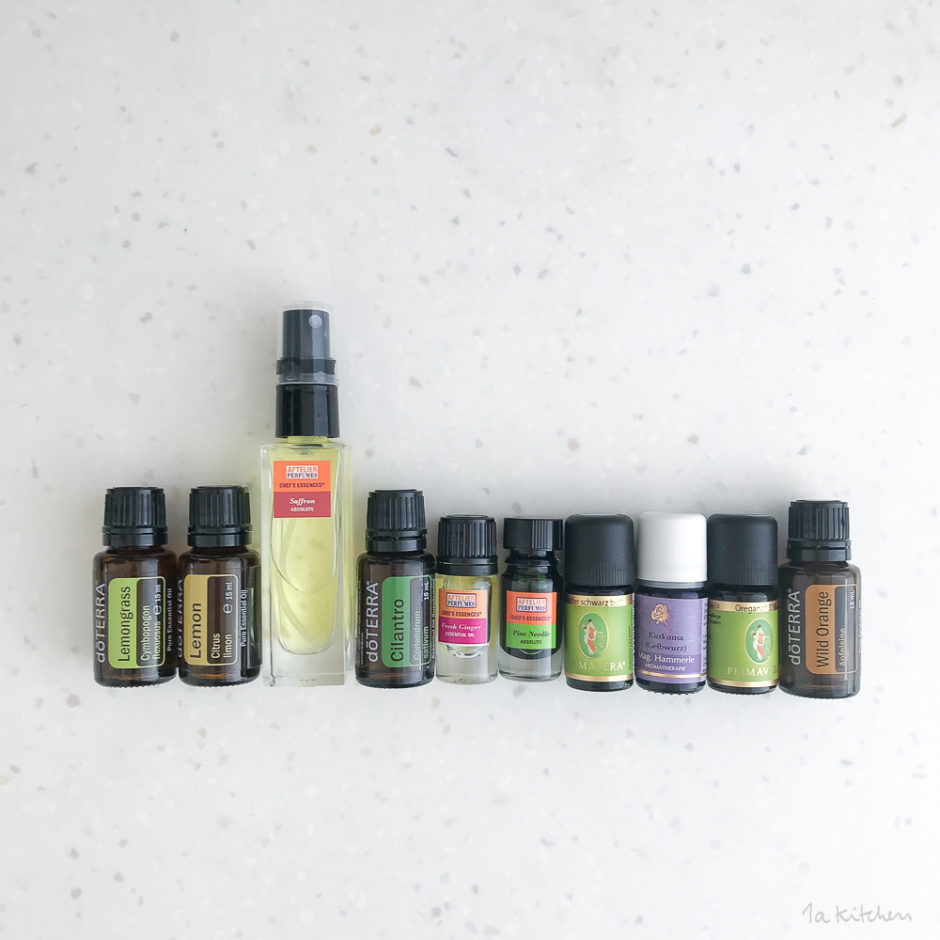
Do you have favorite oils?
So many!
I already mentioned lavender oil. As pure oils I love spearmint in the morning in the shower, alternating with added orange, lime or lemongrass. Otherwise, I like oils from woods and resins, Frankincense,
When it comes to blends, doTERRA convinced me the most. The blends are really complex and deep, and
On the other hand, I appreciate the house and garden trio of Wadi, which consists of a plant strengthening oil, a pest repellent,
How do I best start?
It’s best to start with a handful of favorite oils that you first get to know. Lavender, bergamot, peppermint, orange, cedar, eucalyptus globulus are e.g. Oils that are not that expensive and that can be used to make beautiful (diffuser) mixtures. Use them, research their qualities and find out how they make you feel.
Amazing is also the use in the shower. Simply add 2-3 drops of your favorite oil to the shower floor. I love it!
A great way to incorporate essential oils next to the diffuser into everyday life is an inhaler, e.g. with a centering mix for morning meditation or as a little minute meditation for the purse. The scent
Inhaler with centering blend
1 Inhalation pen made of
3 drops of lavender
3 drops of orange
2 drops of eucalyptus globulus
2 drops of cedarwood
Put oils on the cotton bud of the inhaler. Screw down and voila!
Aromatherapy for the handbag.
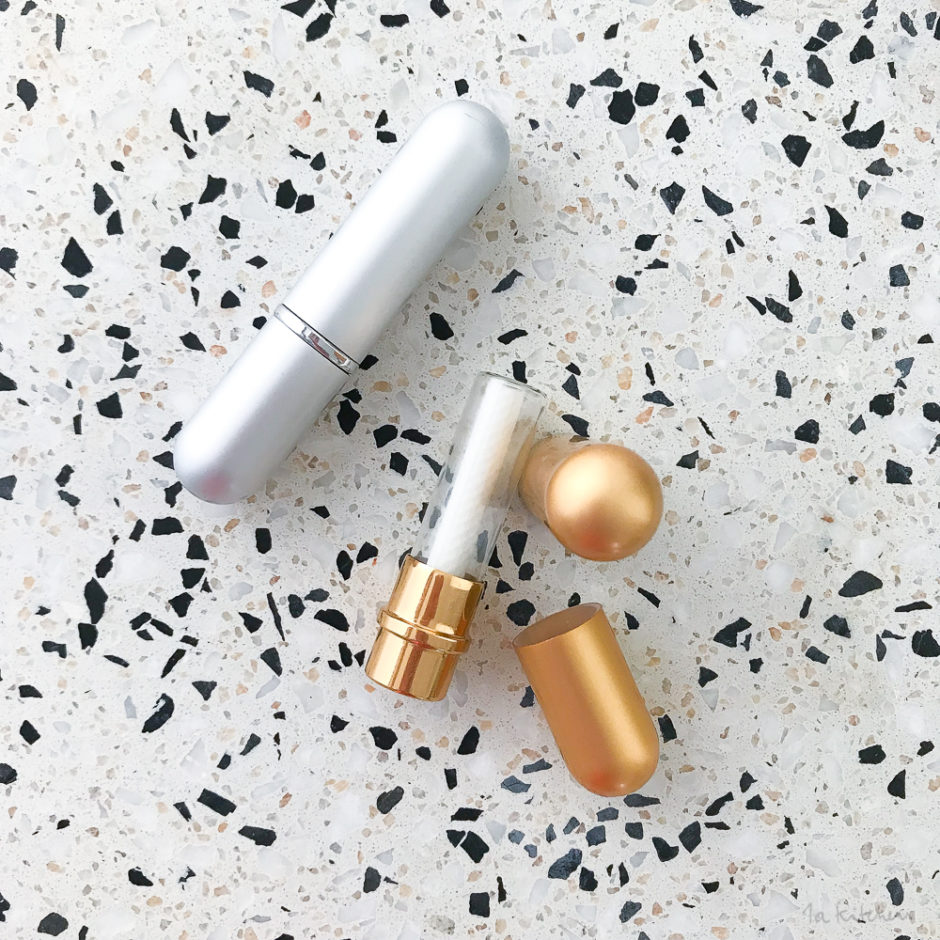
Where do I get essential oils?
Usually, organic food stores stock a small selection of essential oils, and this also looks like a great list of trusted suppliers for the US market here.
It is important that you take care that they are 100% pure natural, essential oils. The label should contain important information: botanical name, production, part of the plant, quality, e.g. controlled biological cultivation, country of origin, as well as the batch number and the period of use after opening.
DoTerra oils can be ordered directly from the doTERRA online shop – but I recommend that you create an account first, then you get all oils with
Helpful Websites
1) Tisserand Institute -> HERE
The classic. Robert Tisserand is one of the leading scientists working on essential oils. Particularly helpful are the information pages on Safety of Essential Oils, a dilution table, and the safe use of essential oils in bath water. There are also online courses and webinars.
2) Natural Living Family -> HERE
At Natural Living Family, Sabrina Ann & Eric Zielinski write about natural lifestyle, including a range of DIYs with essential oils, for example healing remedies, cleaning DIYs or beauty recipes. The hand sanitizer is one of the things that I like to give as a gift. But beware, the site is sometimes a little chaotic in design, I definitely recommend the first book “Healing Powers of Essential Oils”, which is also less dogmatic than the page.
ooks for beginners:
1) The Healing Power of Essential Oils -> HERE
Comprehensive work with DIYs for the body, for healing, care products, detergents and animals in addition to many blends and their various uses. Great bibliography list with all sorts of interesting studies on essential oils.
2) The Complete Book of Essential Oils and Aromatherapy: Over 800 Natural, Nontoxic, and Fragrant Recipes to Create Health, Beauty, and Safe Home and Work Environments -> HERE
Truly a bible with its 682 pages, fully revised in 2016, this standard work leaves virtually no questions unanswered. It contains over 800 recipes, ideas for a medicine cabinet, special sections for women and men, travel, sports, beauty, cooking as well as home and garden.
Sources: Tisserand, R., Young, R .: Essential Oil Safety: A Guide for Health Care Professionals. London, 2013
https: //www.aromapraxis.de